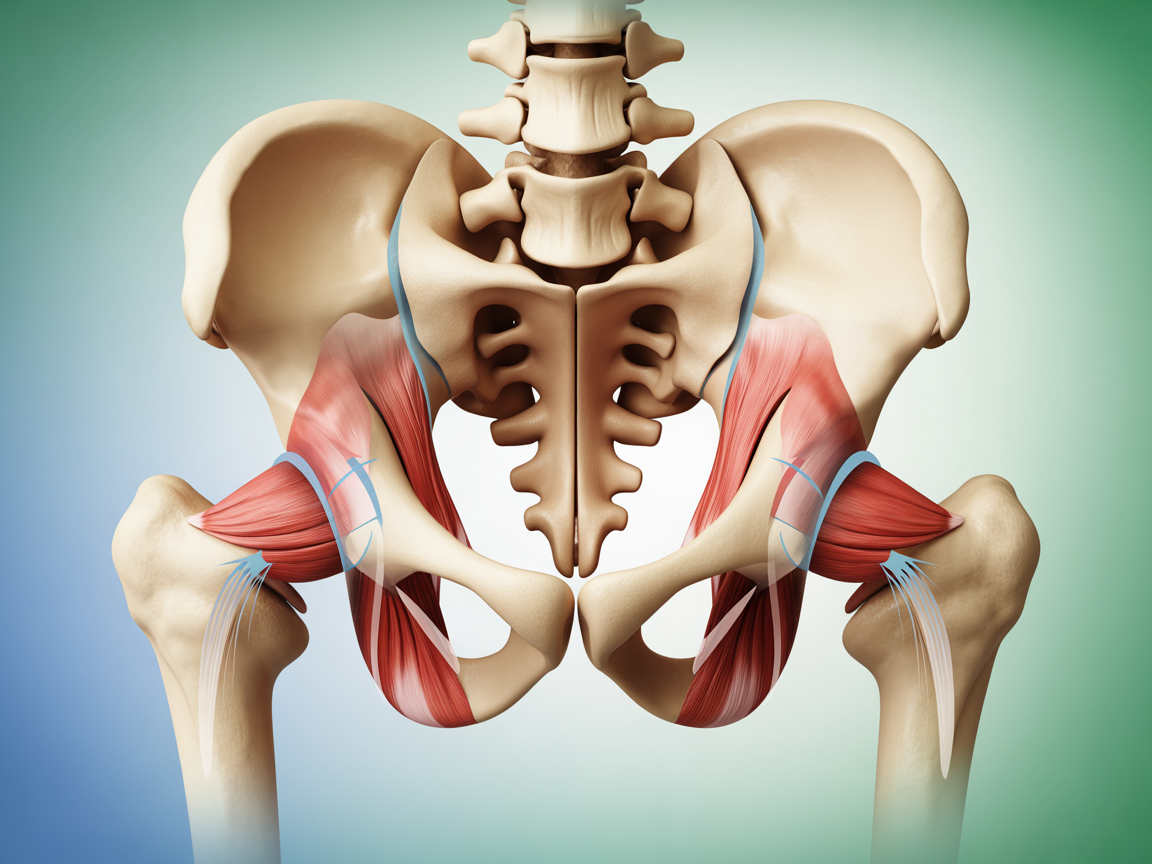How To Get Rid Of Hip Dips Fast at Home in 2 Weeks with Workout Tips You Can Do at the Gym
It may surprise you that around 70% of women naturally have hip dips, along with the majority of fitness models. These indents at the hip-thigh junction are not errors in appearance, but rather an indication of your own unique body shape.
Hip dips, alternatively called violin hips or shelf hips, happen because of your pelvic shape and the way fat and muscle are positioned near your hips. The proper name is ‘trochanteric depression,’ which means the dip between your iliac crest on the hip bone and your greater trochanter on the thigh bone.
Be aware that hip dips are determined by your skeleton, rather than fat or fitness levels. The shape of your pelvic bone is genetically influenced, so naturally, some people will have deeper hips than others, regardless of their level of fitness or percentage of body fat.
A lot of the fitness influencers and models on social media also experience hip dips, but they can be hidden by intentional posing or post-production editing. As a result, a false beauty standard has formed that can make people uncomfortable about something that is naturally their own.

Can You Actually Make Hip Dips Go Away?
You may be curious, as someone reading this, if it is feasible to remove hip dips entirely. The honest answer? Hip dips cannot be erased altogether, but you can make them much less obvious by choosing the right techniques.
Because your bones stay the same, only exercises or diet alone will not fully eliminating this bone structure from the root cause of hip dips. Although the bone structure remains unchanged, you are able to improve the look of the surrounding structures by strengthening the gluteus medius and minimus with exercise, carefully adjusting body fat with your diet, and researching cosmetic choices for dip reduction.
What brings results for you will depend on your anatomy, genes, and the outcomes you aim to achieve. People with only mild hip dips may require only targeted exercises for noticeable results, but others may benefit from combining strategies.
The good news? If you are willing to keep at it and set reasonable goals, you can improve your silhouette and lower the appearance of hip dips, although it’s unlikely to fully erase them.
Best Exercises to Reduce the Appearance of Hip Dips
Focused strengthening of the muscles near your hips, especially the gluteus medius and the gluteus minimus, provides the best results in minimizing hip dips. As these muscles strengthen, the region where hip dips appear appears more even, which can smooth your overall outline.
Performing these exercises thrice or four times weekly within a larger lower-body workout routine provides the best outcome.
- Fire Hydrants: Start in a hands-and-knees position, then lift one leg out to the side, keeping your knee bent to 90 degrees the entire time. This directly targets the gluteus medius. Perform 3 sets of 15-20 reps per side.
- Glute Bridges: Lie flat on your back and bend your knees so your feet remain on the floor. Move your hips up toward the ceiling whilst contracting your glutes fully at the summit. For a tougher exercise, place a resistance band around your knees above the knees. Complete 3 sets of 15-20 reps.
- Bulgarian Split Squats: Support yourself with one foot on a bench positioned behind, then lower into a lunge. This compound movement builds your quads and glutes simultaneously. Do 3 sets of 12-15 reps per leg.
- Side-Lying Leg Raises: Start on one side, stretch your top leg vertically by keeping it straight the entire time. Turn your leg a little so the toes of your working leg point down to the floor for best results. Perform 3 sets of 15-20 reps per side.
- Curtsy Lunges: Bring one foot behind and across your body while bending both knees just as in a curtsy. This targets the gluteus medius from a different angle. Complete 3 sets of 12-15 reps per leg.
During these exercises, accuracy in form and the ability to fully engage muscles matters more than working at a rapid pace. Pay attention to engaging your glute muscles as you move, as this connection greatly enhances exercise results.

Nutrition Tips for Muscle Growth and Fat Distribution
Physical exercise is important, but your diet is also key to growing muscle and controlling fat distribution at the hips. Even though fat reduction at the hip dips is not possible only through exercise, nutritional choices have a significant impact on your body’s composition.
- Try to eat between 0.7 to 1g of protein per pound of body weight each day to support muscle growth: Protein is essential for muscle growth and recovery. Add lean proteins such as chicken breast, fish, Greek yogurt, tofu, and legumes to the majority of your meals to help build up your glute muscles.
- Balance healthy fats (25-35% of daily calories): Fatty fish like salmon, walnuts, and flaxseeds are good sources of omega-3, which maintain proper hormones that control how the body stores fat. Eating avocados and using olive oil gives you monounsaturated fats that help regulate overall hormone function.
- Manage inflammation through diet: Certain types of food may cause your body to hold extra water and become inflamed, which can make hip dips more noticeable. Limit highly processed foods, excessive salt, and artificial ingredients. A better approach involves increasing your intake of berries with antioxidants, leafy vegetables, and anti-inflammatory spices such as turmeric.
- Stay adequately hydrated: Ensuring you drink at least 8-10 glasses of water every day supports better skin flexibility and proper muscle function. Proper hydration assists in clearing your system of toxins connected to cellulite and poor skin texture near the hips.
Crash diets do not assist with getting rid of hip dips and can actually make things worse. Your priority should be to supply your body with the proper nutrients for good workouts, not intense weight loss.

Cosmetic Options to Treat Hip Dips
Should more prompt or notable outcomes be your preference, a number of cosmetic treatments are available to reduce the appearance of hip dips. These options range from non-invasive treatments to surgical interventions.
| Procedure | Description | Cost | Downtime | Results Duration |
|---|---|---|---|---|
| Sculptra Injections | Poly-L-lactic acid filler that stimulates collagen production to gradually fill in hip dips | $3,000-$6,000 | 1-2 days | 2-3 years |
| Fat Transfer | Liposuction from another body area with fat injection into hip dips | $8,000-$12,000 | 1-2 weeks | Long-lasting (with some reabsorption) |
| Body Sculpting | Non-invasive treatments like EmSculpt or CoolTone that build muscle through electromagnetic stimulation | $2,500-$4,000 | None | 6-12 months with maintenance |
| Liposuction | Strategic fat removal from surrounding areas to create more harmonious proportions | $5,000-$8,000 | 1-2 weeks | Permanent (with stable weight) |
Before their choice of any cosmetic procedure, it would be in order for them to book consultations with board-certified plastic surgeons or dermatologists that specialize in body contouring. Request to view before-and-after pictures of real patients that share your body build. Study of possible risks and complications inherent to each procedure is essential, as well as the long-term maintenance to be taken for maintaining the results.
Although these treatments can offer major improvements, there are monetary costs and possibly negative effects that must be properly balanced against the likely good that they will bring.
Latest trends and confirms in hip dip treatments 2025
The area of body contouring is progressing rapidly, with many new techniques appearing in the year 2025. Current research is dedicated to creating methods that minimize invasiveness and downtime while achieving naturally shaped results.
An important innovation involves the use of AI-supported body scanning technology to tailor procedures specifically for individual anatomical features. It employs 3D imaging to select exactly where fillers or fat should be placed for an undetectable hip contour.
Radiofrequency-assisted lipolysis has become more popular because it removes fat and tightens the skin together, resolving one of the main issues with standard liposuction. Dr. Maya Richardson, a distinguished cosmetic surgeon, notes, “Modern RF technologies grant us remarkable accuracy in shaping the hip area, and help by stimulating collagen for softer skin.”
Social media platforms including TikTok and Instagram feature ongoing interest in the HipDipTransformation challenge, as users post updates about their combined exercise and cosmetic journeys. One positive development in this trend is the greater focus on practical hopes and body acceptance.
The market has also added wearable muscle stimulation devices, which say they bolster traditional exercise results by applying electrical pulses to the gluteal muscles continuously. Even though studies are currently being conducted, early outcomes point to mild improvements when these devices are relied upon with traditional strength training routines.
Before and After: Real Results From Real Women
Every person’s process for minimizing hip dips is unique. A number of women experience meaningful results in 8-12 weeks, but for some, changes are more gradual and only show up after continued effort for a longer time.
Sarah, who is 32, put her focus only on targeted gluteal exercises for six months: I didn’t aim to totally get rid of my hip dips, and they’re still there. Still, my hips now look rounder and fully fleshier. The key was consistency with my glute workouts.”
Jennifer, 28, combined exercise with nutrition changes: Eating more protein played a major role in advancing my muscle development. After four months, I could still see my hip dips, though they seemed significantly smaller. Plus, I feel stronger overall.”
Following years of working out, Melissa, 35, decided to try Sculptra injections: Exercise allowed me to reach good muscle tone, but the dips on my hips did not go away because my bone structure pushed them out. The filler was responsible for making my hips as smooth as I desired. It was expensive but worth it for me.”

The Best Approaches for Relieving Hip Dips
The most successful strategies for achieving hip dip reduction are outlined below.
Upon examining every strategy and study, we can assert what actually assists in minimizing hip dips:
Most people find that training the glute muscles specifically yields the best natural outcomes. The exercises listed target those areas that are key to filling out the hip dip region.
Your training is enhanced by proper nutrition, which gives your muscles what they need to grow and helps with total body conditioning. Remember that protein intake and hydration are particularly important.
Consistency matters more than intensity. Repeating moderate workouts on a consistent schedule provides superior outcomes than rarely doing very intense sessions followed by pauses.
Faster results can be expected from cosmetic procedures if your hip dips are mainly caused by bone shape, despite possible higher expenses and risks involved.
At the core, your body’s bone structure is one of a kind and deserves admiration. Reducing hip dips is possible with these techniques, but respecting your body’s shape is also perfectly acceptable.
Hip dips are a natural occurrence in many women, mainly defined by your bone structure instead of your level of fitness. Though hip dips can’t be completely erased, the right plan with targeted workouts, smart nutrition, and cosmetic solutions if you wish can noticeably lessen them.
The most important takeaway? Focus on what makes you feel confident and strong. Your method may involve strength training, cosmetic procedures, or simply appreciating your body’s shape, but there is no one right way.
It should be remembered that social media photos are frequently set up, retouched, or filtered. The human body shows plenty of variety, and each type is legitimate and lovely. No matter which path you choose, make sure it promotes both yourself-image and your internal well-being.
Were any of these hip dip solutions tested by you? Let us know about your path by leaving a comment or sharing on social media!
